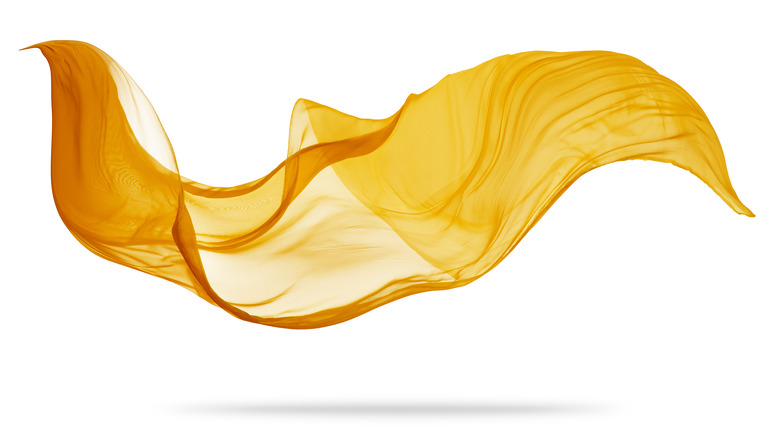Silk Vs. Satin: Which Is More Popular In Fashion?
When you sit down and start to dig into it, fashion can be a bit overwhelming. There are tons of brands, styles, and trends out there. It turns out that when you strip back to the basics, even those are a bit confusing. Take silk and satin, for example. The two may seem different, but it turns out they're in entirely different categories. Hold on to your hemlines, my friend. Because the difference between satin and silk will blow your little fashion-loving mind.
The confusion over satin and silk is a common one. Whether you're looking for a pillowcase or an evening dress, the two terms come up and it's hard to know which one is for you. It turns out that they actually both are. According to Contrado, satin isn't even a raw material at all. Here's a breakdown of everything you need to know about satin and silk, so you can tell the difference between the two. And, you know, sound intelligent to all of your fashionable friends.
Satin is a weave, not a material
If you've been living your life thinking that satin and silk are the same, think again. It turns out that satin and silk aren't even in the same category when it comes to fabrics. There's a huge difference when it comes to the two. According to Contrado, satin is a type of weave, while silk is a raw material. That means that you can create a satin weave out of silk, but it could also be made out of other materials.
To put it simply, a weave is an over-and-under pattern, but a satin weave is an under-and-over pattern in specific places. That "fewer interlaces" (via Contrado) of the satin weave lead to the light and flowing look that people so often refer to when they talk about satin.
Silk, on the other hand, is a raw material, not a weave. According to Dutch Label Shop, satin can be made out of silk, nylon, or polyester. The blend is not quite as soft as silk, which is what leads people to think that satin is a material of its own — good to know when you're shopping.
Silk is better for your hair and skin
When it comes down to it, silk is more popular in fashion because it's better for your skin and hair. According to dermatologists interviewed by NBC News, silk is good for skin because it's lightweight and breathable. Silk is the natural material, and satin is a blend, which makes it heavier. That means that items like silk pillowcases, eye masks, and even face masks are just overall better for your skin.
The difference is in the price, too. Silk can be anywhere from $8 to $80 per yard for fabrics (via Siizu), whereas satin is priced as low as $3 per yard and only ranges to about $40 at most (via Sewing Is Cool). Silk is more likely to be seen on the high fashion side, while satin makes for much more affordable clothing. In fact, according to Business of Fashion, Chanel even bought multiple companies just to make sure that they had the highest quality silk back in 2016.
Bottom line: if you're willing to pay more for the skin and hair benefits, then silk is the way to go when it comes to fashion.


